Quick Links
97% of search engine users have searched for a local business.
So there’s no wonder that local business owners are going to great lengths to optimize their sites for Google and other search engines.
Especially when you take into account that 28% of all local searches result in a purchase!
Getting your local SEO right can result in a huge payoff for your business, and our local SEO checklist offers every step, tip, and trick you need to start ranking no.1 on Google.
Ready to get started? Let’s get into it!
Why Is Local SEO Important?
Before we get stuck into our checklist, let’s remind ourselves of why local search strategy is so important.
A local SEO strategy makes sure that you are in prime place at the top of their search. This is incredibly important considering that 24.4% of all clicks go to the first local result on the page.
If you want your business to become more visible to a local audience, you will need to enhance your website with local search engine optimization.
Not only will good local SEO boost the number of people that visit your business (50% of “near me” searches result in an offline store visit), it will also boost your online brand presence and authority.
Don’t miss out when someone in your area searches for a business like yours, get ahead of your competitors with our ultimate local SEO checklist!
13 Steps To Optimize Your Local Business
1. Claim your Google Business profile
This is the first (and easiest) step every business should take to perform better in local Google search results.
Google Business, previously known as Google My Business, is a tool that allows you to create a profile for your business on Google. Have you ever searched for a local business and seen a little profile pop up featuring information, opening hours, and reviews? Yep, that’s a Google Business listing.
As Google explains, “Google Business Profile is an easy-to-use tool for businesses and organizations to manage their online presence across Google. To help customers find your business, you can verify your business and edit your business information”.
Not only do you need to make sure your business has one, you also need to make sure it’s accurate and optimized.
Here we’ll explain how to create and optimize your listing, as well as introduce some other Google tools that will boost your local SEO efforts too.
How to create a Google Business listing
Luckily, you can get set up and optimized in several simple steps:
- Log in or set up Google Business Profile Manager
If you have a Google account, you will already have access to Google Business and its Profile Manager.
- Add your business
Start typing your business name into the search bar and see if it appears in the drop-down menu. If it does not, simply select the option to “add your business to Google”. Select the most relevant business category for you and click next.
- Add your business location
Add the address for your business’s location and position the marker on the map so that you can feature on Google Maps. If you offer services, Google also provides an option to list your service areas. 
- Add contact information
This is where you add your business’s website and contact phone number (if you have one).
- Verify your business
Google will ask you to provide your mailing address so that they can verify your business. This address will not feature on your public profile.
If you have a physical business, Google will send a postcard to the relevant address. If you do not have a physical location, Google will allow you to verify via email instead. Either way, Google will provide you with a five-digit code for verification.
Do not skip this step, it will negatively impact your local SEO.
- Optimize your profile
Once you’ve confirmed and verified your business listing, you can begin to optimize your profile to attract local customers. You will be able to add business information about what you do or sell, your opening hours, your contact preferences, and photo and video.
Make sure that your profile is as complete as possible. Google itself has said, “businesses with complete and accurate information are easier to match with the right searches”. Furthermore, keep your opening hours updated for seasonal changes.
When adding images to your profile, make sure you use a high-quality logo and cover photo that accurately represents your business. Consider adding videos that show your business, location, and friendly team. Also, include images that show off your products and make them look great!
Later in this article, we’ll be explaining how to find local keywords, you’re going to want to include these in your business listing. Include them naturally in your business description without keyword stuffing.
Lastly, ask your customers to leave positive reviews or ask a question on your Google Business profile, then make sure you reply to them. You can manage these testimonials through your Google Business Profile Manager dashboard.
- You’re up and running!
Once your profile is optimized and ready to go, click ‘continue’ to reveal your Business Profile Manager dashboard. This is where you will be able to see insights about your business listing, manage messages, respond to reviews, and even run Google Ads.
Google offers two other tools that will help boost your SEO efforts: Google Search Console and Google Analytics.
2. Set up Google Search Console
Google Search Console is a free tool designed to help you optimize your site and rank better on SERPs (search engine results pages).
Submitting your business’s website to Google Search Console will make sure that Google is aware of your site, and is actively crawling it for relevant keywords and information so that it can rank you accordingly.
You will also gain access to the Google Search Console dashboard where you can see daily reports for your site, revealing bugs and errors you need to fix in order to rank better.
Here’s how to get set up:
- Log into your Google account
Head to Google Search Console and click ‘start now’.
Log into your Google account, and note: this should be the same Google account that you used to set up your Google Business listing.
- Enter your website address
Once you’re in, click the right-hand corner option to enter your web address.
- Verify your web address
Google now needs you to verify that the website you entered is yours. You can do this by signing into your domain name provider or uploading an HTML file.
- Upload your XML sitemap
This step isn’t essential for setting up your account, but it is essential if you want to improve your site’s SEO. You might want to use an XML sitemap generator here. This helps Google’s crawlers index your site quicker and get you ranking for relevant search queries.
Once you’re verified, you can check your Search Console dashboard to learn more about your search engine performance. You’ll be able to see the keywords you currently rank for and find out about any site errors that need to be fixed.
3. Set up Google Analytics
Google Analytics is a free tool that allows you to track your website’s traffic and other relevant SEO data. This information will help shape your local SEO strategy moving forward.
Here’s how to get set up:
- Log into your Google account
This should be the same Google account you used to set up Google Business and Google Search Console.
- Click ‘Start using Google Analytics’
Click the option to start using Google Analytics, and select ‘Google Analytics for websites’.
- Add account name and website
Add your account name followed by your website name in the appropriate fields. Fill in your website address, using http or https depending on whether you are in possession of an SSL certificate.
- Select industry category
Find the category that best suits your business. This then helps Google provide benchmark data for other similar businesses.
- Select ‘get tracking ID’
While ticking the data sharing options and terms and conditions, make sure you select ‘get tracking ID’. You can then install this ID code on your website to allow Google to track your traffic data. If your site is based on WordPress, you can use this free plugin to install the code.
With all of those steps complete, your Analytics profile is ready to go!
3. Find local keywords
A key factor in driving targeted local searchers to your business is using the right keywords. In this section, we’ll explain how to do thorough local keyword research.
This process allows you to understand exactly what your potential customers are typing into search engines. And therefore, when you implement these keywords into your website and Google Business listing you’ll be able to appear in these local search results.
Here’s our method for the best local keyword research:
Use a keyword research tool
The first step to finding local keywords is to use a free keyword research tool. Use this tool to search for the services you offer. Each keyword in the results is paired with search volume data. This data lets you know how many people are searching for that query.
It is hard to find local search data here, as most SEO tools calculate their search volumes by country. Even if you have services with an incredibly low search volume, it’s still important that you have a dedicated page for them on your site.
However, those services with high search volumes are the ones you need to prioritize in your SEO strategy (put them at the top of your list!).
When it comes to local SEO keywords, it’s important to note the difference between implicit and explicit local searches.
Implicit keywords are searches like “electrician” and “alarm installation”, where the searcher is hoping local results will automatically come up.
Whereas explicit keywords are searches where the searcher specifies their area, such as “electrician in Chicago” and “alarm installation in Chicago”.
Finding implicit keyword search volumes:
Although it can be hard to find local search volume data for general keywords like “electrician” and “rewiring”, it is made possible by Google Keyword Planner. This data will then help you further prioritize your list.
Simply paste your services into the bar that says “get search volumes and forecasts”. Make sure these services are in implicit form, meaning it’s just the service – no mention of location. Then change the location to the area where you offer that service.
This will then reveal the number of people in that area searching for that service per month. The services with the biggest search volume should be prioritized at the top of your list!
Finding explicit keyword search volumes:
For this one, you can go back to your free keyword research tool. Entering explicit versions of your service keywords – which means service followed by the area you service. For instance, “electrician in Chicago”, “rewiring services in Chicago”, or “alarm installation in Chicago”.
Your search will reveal the search volumes for these explicit keyword searches. Once again, move those with a high search volume to the top of your list.
Keyword strategy for service pages
When creating search engine optimized web pages you will need to follow a keyword strategy. This strategy should include a focus keyword, as well as related keywords, synonyms, and long-tail keywords. You’ll use these keywords later in your on-page content (see step 3).
By now, your keyword document should be divided into each service page and any subcategories. Make those service pages headings so that you can list related keywords below.
For every service page, your focus keyword will be the service itself. In this case, it’s “alarm installation”. Further keywords will include explicit localized terms such as “alarm installation in Chicago”.
Now, return to your keyword research tool and run a search for your service term. This should offer related terms such as “alarm system installation”, “alarm installation near me”, “alarm repair”. You may also find long-tail search queries such as “how much does alarm installation cost?”.
Make a note of the terms you think make the most sense for each service.
4. Optimize your web page content
This step involves optimizing on-page elements such as URLs, title tags, meta descriptions, text content, images, and NAP details. This will boost your site’s user experience and attract organic traffic.
Content is one of Google’s most important ranking factors and we’ll show you how to optimize your on-page content for local searches.
URLs
Firstly, make sure every page’s URL is clear and simple, utilizing your focus keyword where possible. For example, “yourcompanyname.com/services/alarm-installation”.
Title tags
Your page’s title tag will be the clickable headline that appears in a Google search. This needs to be concise and include your focus keyword. Try our title tag generator to stay within Google’s character limit.
Meta descriptions
Meta descriptions are the preview snippet that appears in a Google search result. Just like title tags, these can be optimized by staying within a character limit and including keywords.
If using WordPress, you can use the free Yoast SEO plugin to create a Google-friendly snippet for each page.
Text content
Every service page should include a description of the service, how it works, how much it costs, what’s included, etc. Review your keyword list to make sure searcher queries are answered on the page and include your keywords naturally without stuffing.
Images
Images are a great way of breaking up content and illustrating your services. However, large file sizes will slow down your site and ruin the user experience. Use a free service to compress your images.
NAP details
Make sure that every page of your site uses the same business name, address, and phone number – including your Contact page. You should also ensure that these are the same details listed on your Google Business listing and any directories you appear on. See Step 7: Optimize Citations for more details.
Sticking to these rules when creating or editing your homepage, web pages, and landing pages will stand your small business in the best stead to rank on Google.
5. Make sure your site is mobile-friendly
As of 2022, 70% of web traffic comes from mobile phones. What’s more, 78% of local searches on mobile result in an offline purchase.
Google’s algorithm ranks mobile-friendly sites higher in search results, so making sure your site is responsive and ready for mobile browsers is a huge part of your local SEO efforts.
Consult your web designer to make sure that your site is responsive to mobile devices and tablets. You want to make sure that page load speed is just as quick on mobile as it is on desktop.
Google also offers a tool that checks how mobile-friendly your pages are.
6. Blog content aimed at your target customer
Your search engine optimized web pages should now be targeting lots of your target keywords. However, you may find that there are some keywords you haven’t been able to use. You can now use these key terms and questions to shape blog content for your site.
Having a regularly updated blog is a staple for any digital marketing strategy. SEO keyword-focused articles are used by content marketers to boost visibility in search engine results.
But bear in mind: When it comes to local SEO, the same people searching “how long does car alarm installation take?” may not have the local intent necessary to hire your business.
Don’t let this put you off including blog content on your site! These search queries and keywords provide valuable information about what your potential customers and target audience want to know.
Including helpful blog content on your site helps build reputation, authority, and trust. And every local business stands to benefit from a community of trusting customers.
7. Encourage customer reviews
Remember when we said your Google Business listing allowed customers to leave you a review? Generating and monitoring those online reviews is a vital part of mastering local SEO! Here we’ll explain some of our best tips and tricks to make the most of this feature…
To generate more Google reviews for your business you can:
- Ask your customers to leave a review.
- Add a Google review button to your site.
- Use your Google Business account to review other businesses in your area – they may return the favor as a token of appreciation.
Negative reviews happen to every business, but how you deal with them is what affects your local SEO efforts.
In the case of a negative review, try to respond with contact details to resolve the issue in private.
Although Google has stated that negative reviews may impact your business, responding to all reviews will boost your local search performance – so remember to respond to the positive reviews too!
8. Optimize citations
Citations are other mentions of your business’s NAP details (name, address and phone number) across the web. Google uses these citations to verify your business’s online authority. Optimizing your local citations can be a time-consuming task that requires attention to detail, but we’ve broken down every step here:
- Make sure NAP details are accurate and consistent across every web page and business listing.
- Ensure every link to your website directs to the correct landing page.
- Use the Moz citation checker to do a citation audit, then clean up duplicate content and incorrect listings.
- Analyze your competitors to see where they get their citations. If they have a citation listed somewhere you do not – get listed there too.
- Get listed on local directories (more on this in Step 10).
9. Local link building
The citations described above begin the process of link building for your website. However, a local link-building strategy could also benefit from some high authority backlinks leading to your site.
Backlinks are important for SEO because they demonstrate domain authority to search engines like Google and Bing. However, when it comes to local SEO, you’ll want to get backlinks from locally relevant sites.
Let’s talk through the options to find and secure local backlinks:
- Submit guest posts to locally relevant blogs and publications.
- Join local industry committees and get them to link to your site.
- Sponsor local events.
- Use a free backlink checker tool to see how your local competitors get backlinks and reverse engineer their methods for yourself.
- Offer quotes and statistics to local news reports and stories.
10. Local PR
Getting local PR coverage for your business could fall under the link-building category, however, it also serves to increase brand awareness, trust, and authority.
Strive to get your business’s name in local papers, publications, and news sites (for the right reasons!) – not only will you receive a backlink, you’ll also spread word of mouth.
Reach out to local news if you have a grand opening or event – they may be interested in covering it.
11. Local directories and listings
The more local directories your business appears in, the more signals Google gets that you’re a significant local business that they should prioritize in local search rankings.
Make sure that you have claimed and optimized your listings on popular directories such as Yelp and Yellow Pages, using accurate and consistent NAP details. Use images on these listings where possible as they get added to the Google Images algorithm. Other free directories include Foursquare and Bing Places.
Note: Many of these directories allow your customers to leave reviews. You should monitor and respond to these just like you do with Google Business.
12. Use Schema’s geographic markup
One of the final methods you can use to improve your local SEO is to add Schema markup to your website.
Schema.org is made by the world’s most popular search engines Google, Bing, Yahoo! and Yandex. You can use it to help search engines understand your site better and rank it accordingly.
You can also add Schema’s code to your web page content to allow star ratings, reviews, and pricing info to appear in your Google search results.
When it comes to using Schema’s data markup for local SEO, you’ll want to pay attention to their “geographic markup” feature. This markup provides search engines with more information about your geographical location, thus boosting your performance in local search results. Before you add Schema’s geographic markup to everything, check Google’s Schema guidelines to avoid becoming spammy.
13. Social media
Social media continues to be a valuable brand-building tool for businesses of all shapes and sizes, but how can it help your small business and your local SEO?
Connect with customers
Customers are expecting a higher degree of transparency from the brands and businesses they support – they want to know who is behind a business, and if their views and values align. A strong social media allows you to make emotional connections with customers and improve retention over time.
Reach more of your target audience
All main social media platforms offer paid adverts that can help you reach more potential customers than ever.
SEO-boosting links
The jury is out over whether a portfolio of strong social media pages sends signals to Google to boost your rank. However, every social media platform you join is still a valid backlink to your site.
It’s Time to Put This Local SEO Checklist To Good Use
Before you run off and crush the local SEO game, we’ll leave you with the reminder that good local SEO starts at your brick-and-mortar business.
Completing all of the steps on this list will only boost your bottom line if you run a healthy and positive business that does its job well. A good website and a few backlinks are no replacement for good staff, products, and customer service!
Hopefully, you found this local SEO checklist helpful! If you have any more questions about boosting your business’s SEO, don’t hesitate to reach out and give us a call – we’re here to help!
P.S. Have you signed up for a HOTH account yet? You can get access to SEMRush data for free, plus manage all your link building in one place. Click here to sign up (free).



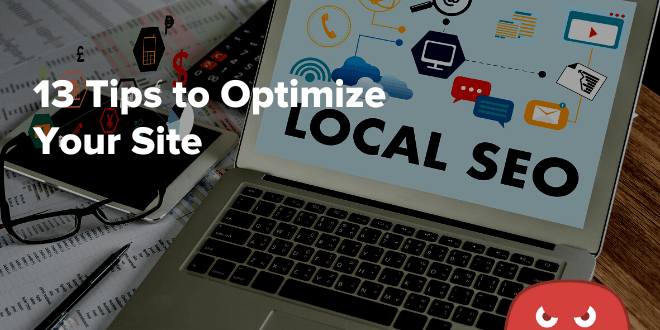



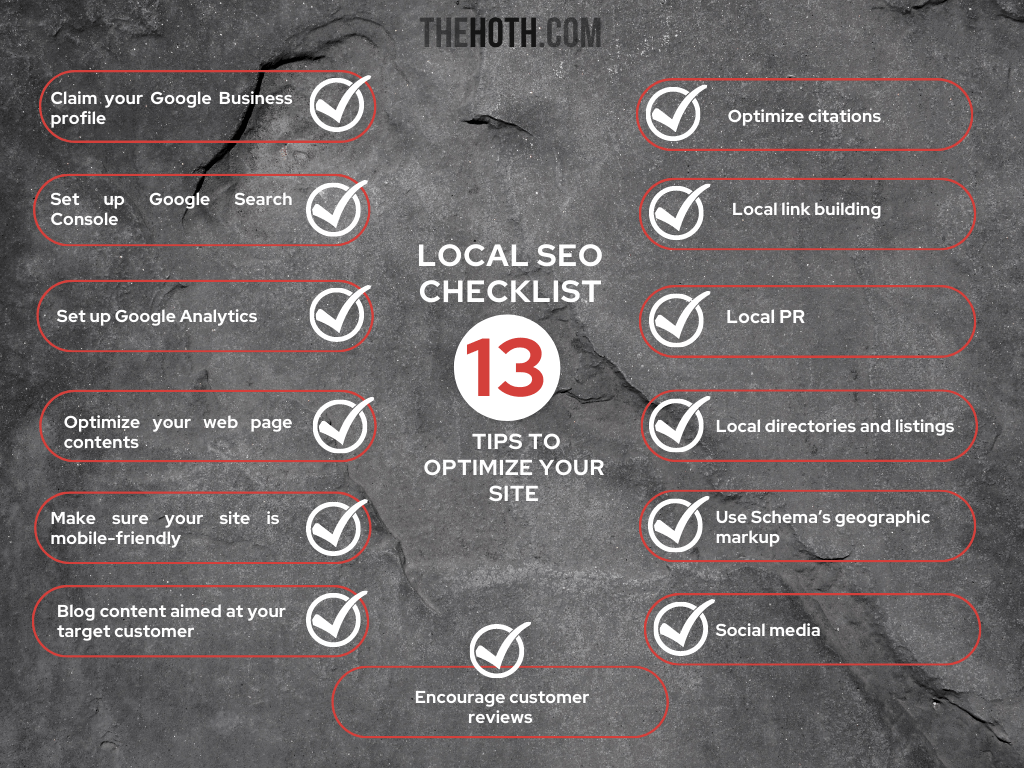
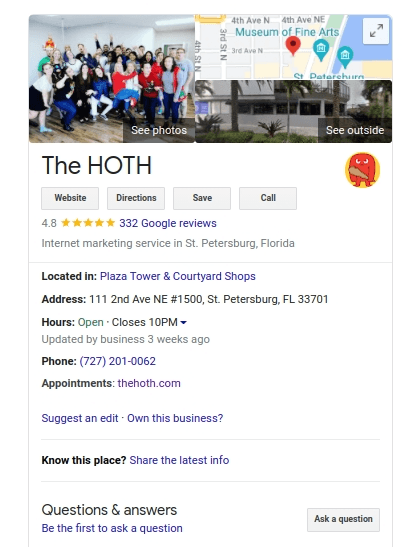
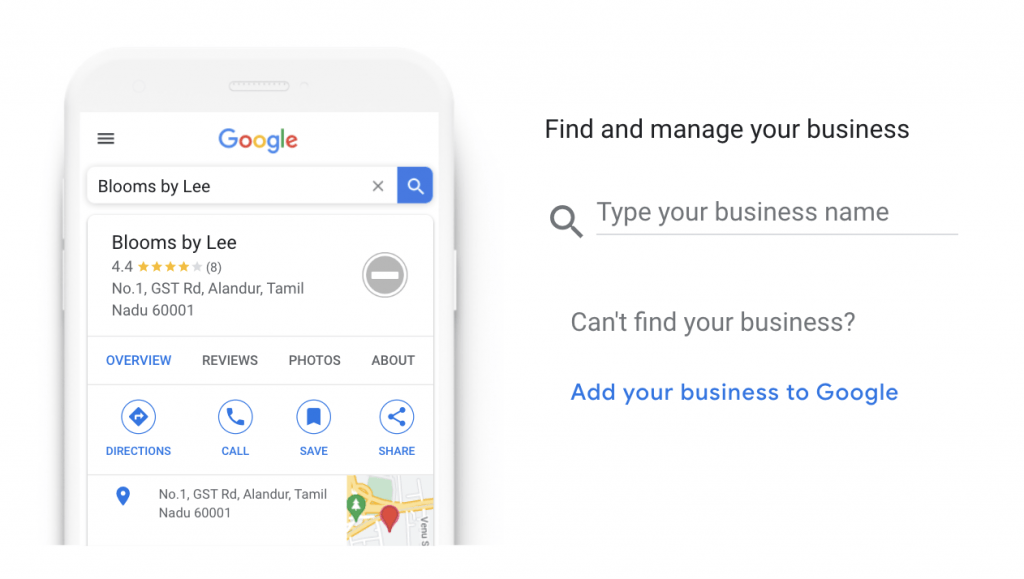
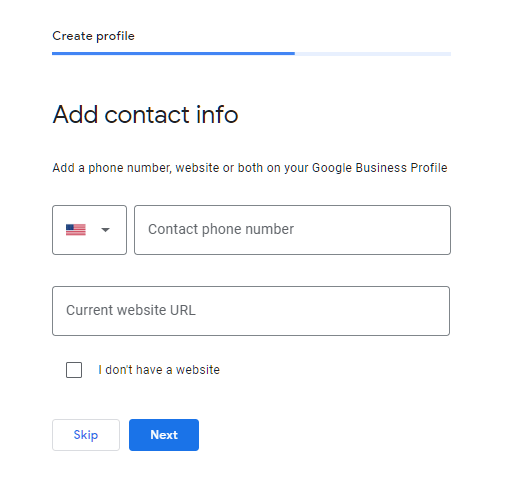
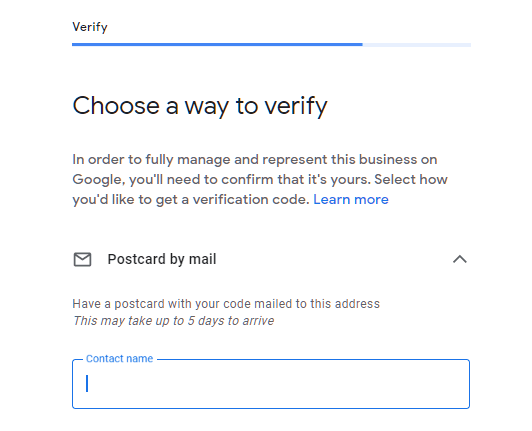
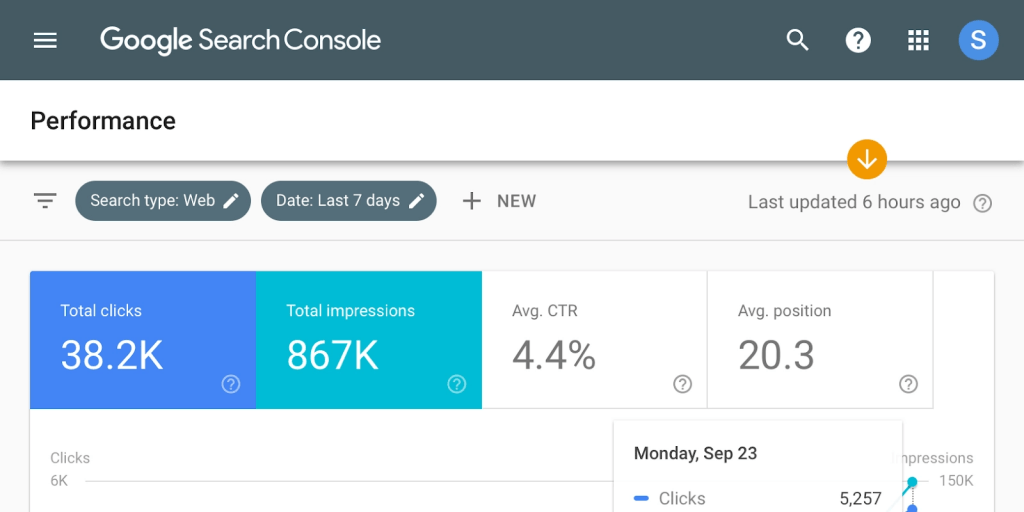


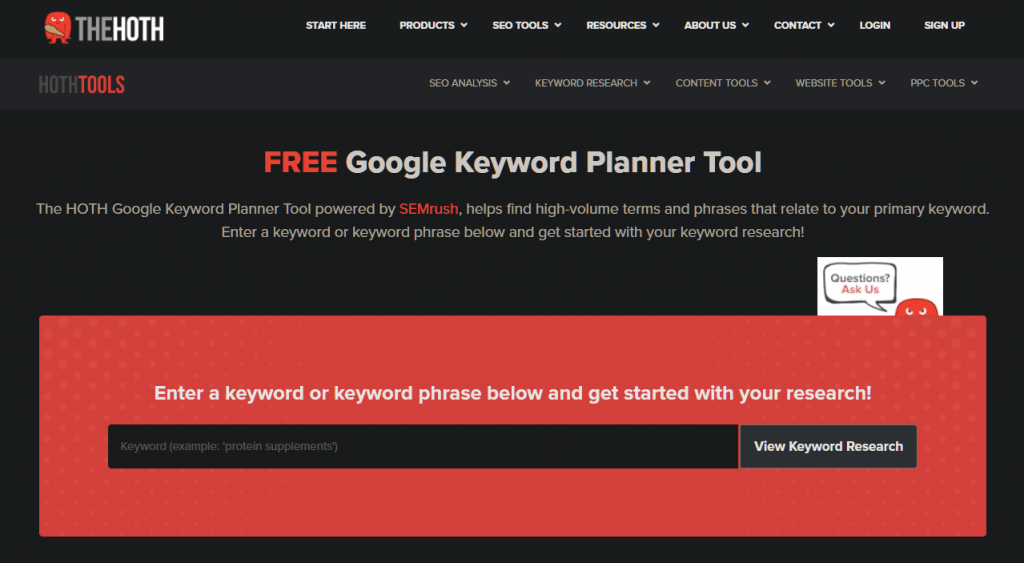
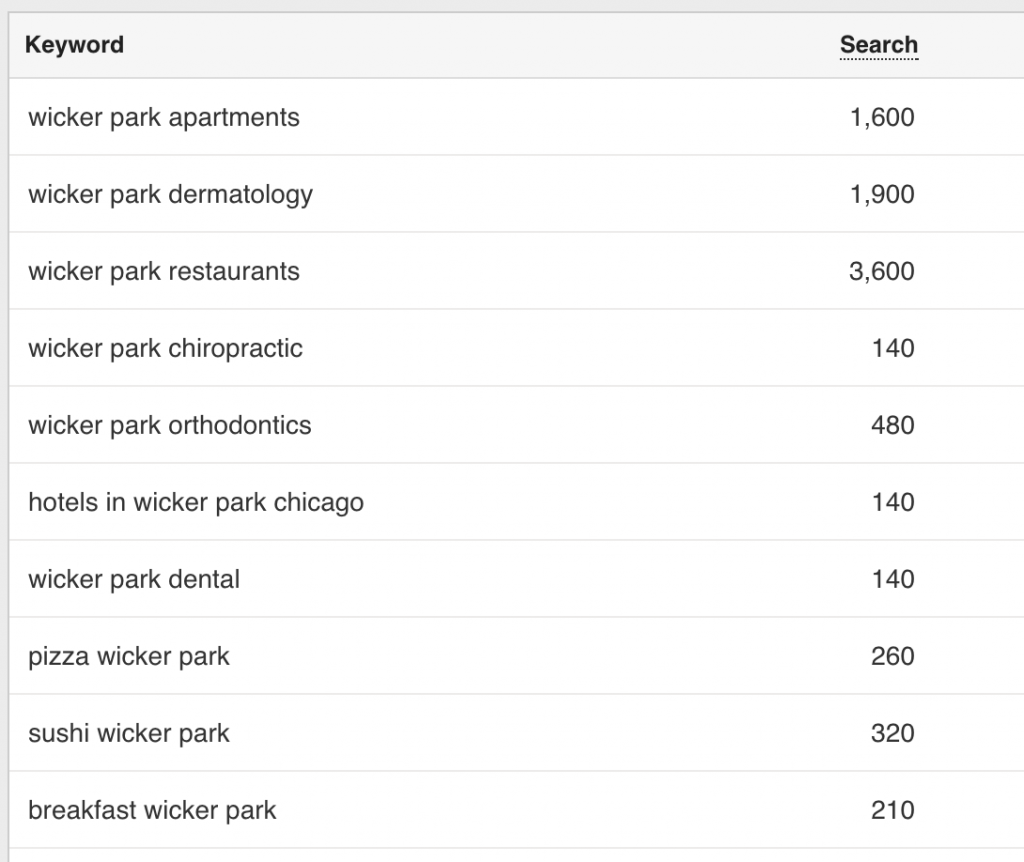


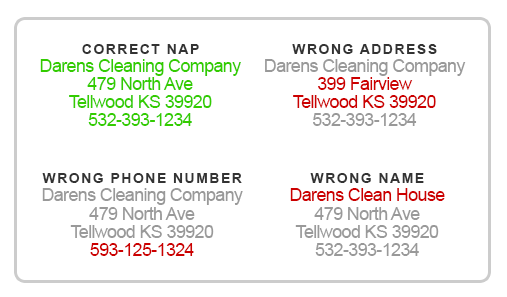
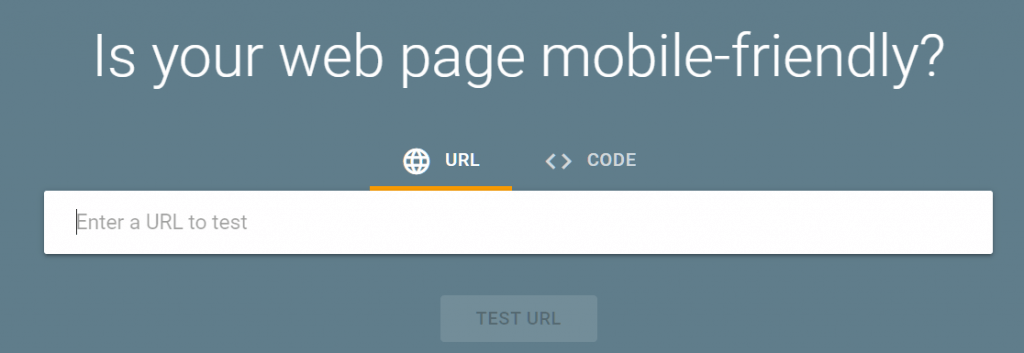
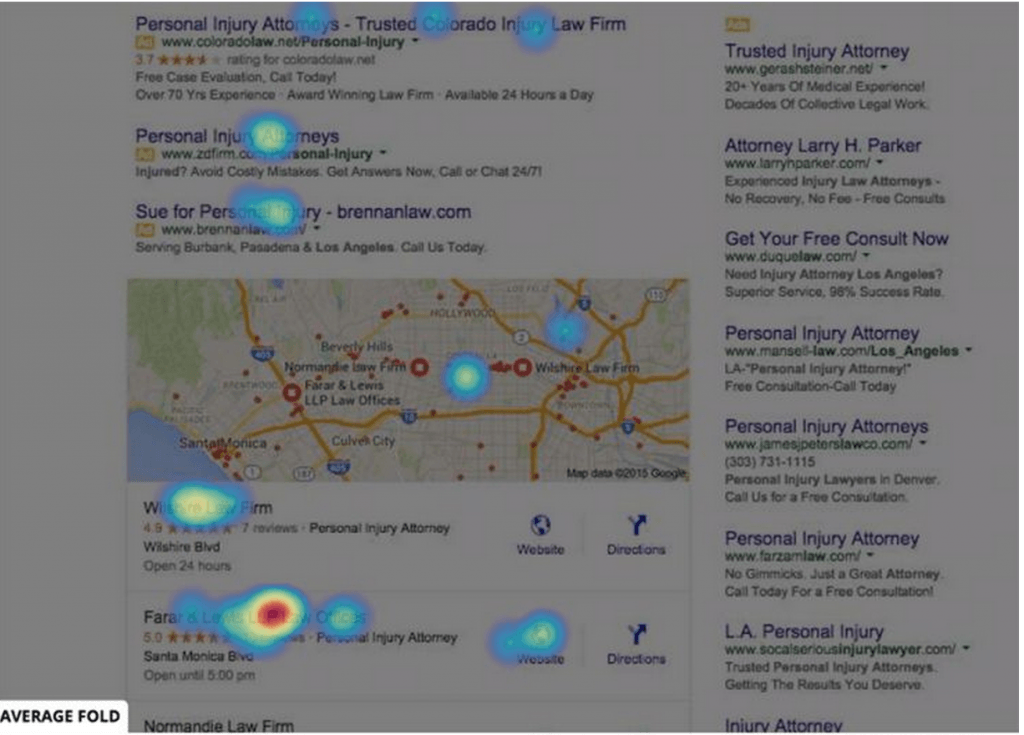
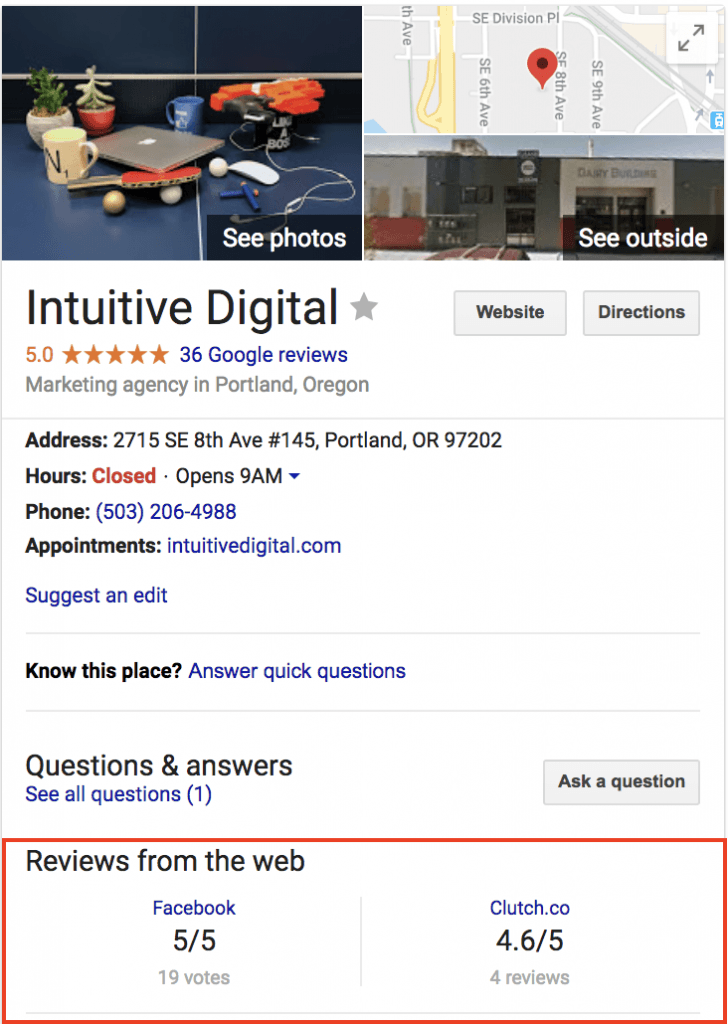
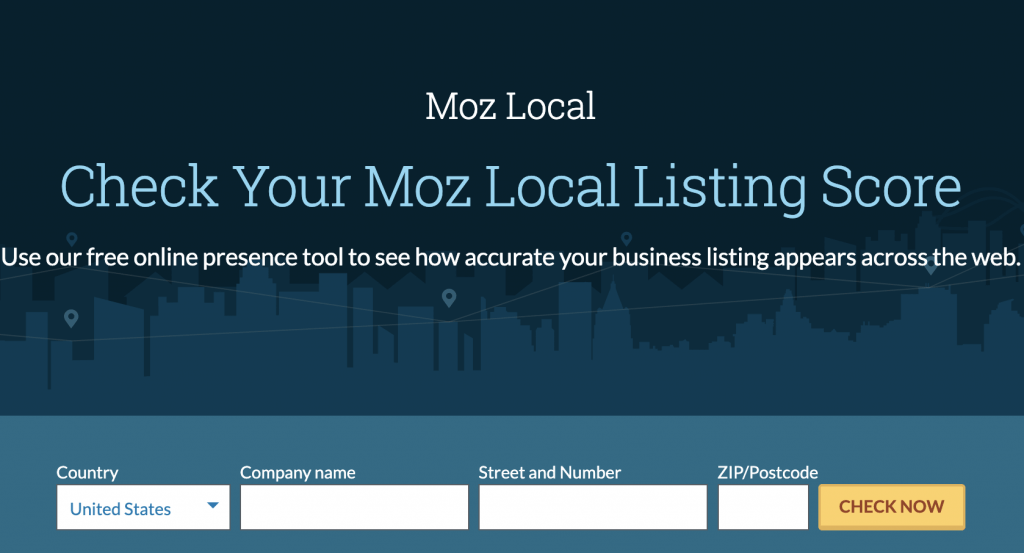
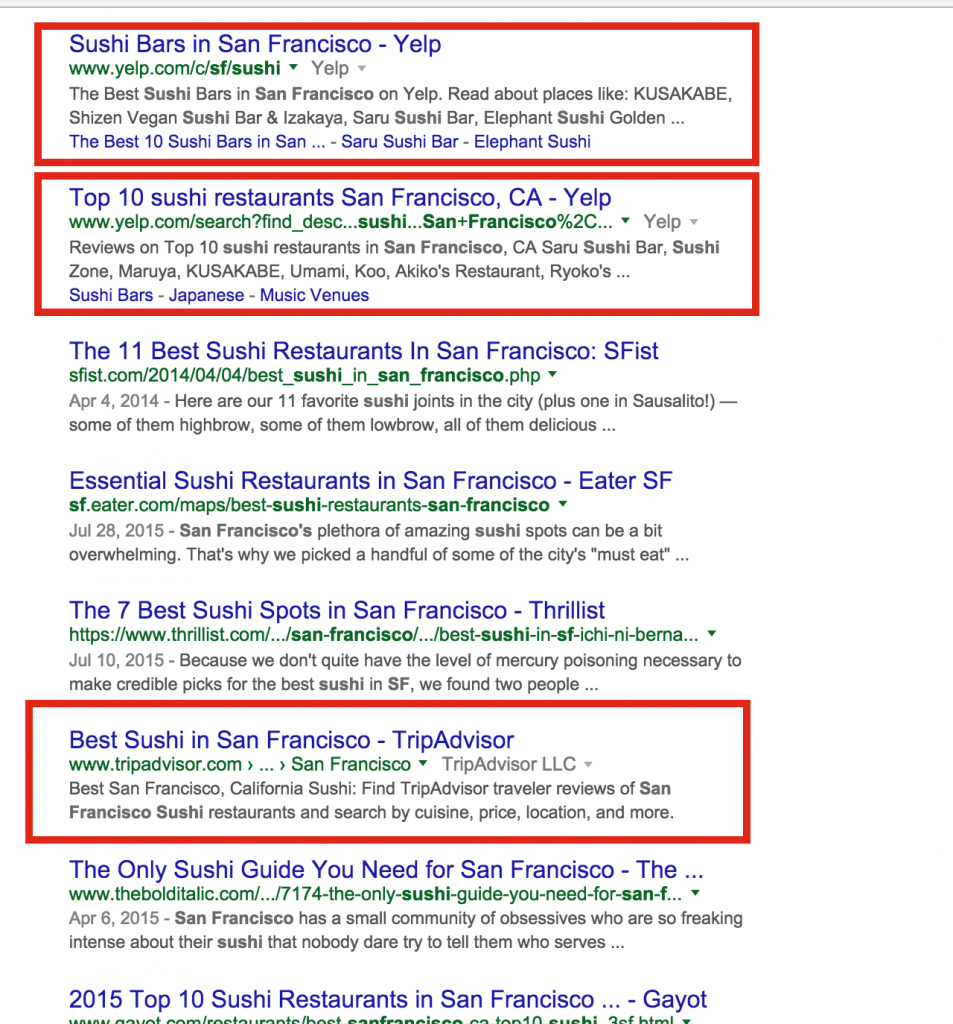


It’s nice to see some of the traffic shares that Snack Pack gets versus Organic. I’d heard that the PPC was usually only around 10% of clicks – looking at these figures, then maybe each of the three paid ads is getting around 8% each.
I do PPC for a lot of different clients. From my experience the majority of clicks happen in spots 2 or 3.
The stats around paid vs. organic continue to amaze me. Those numbers make it so obvious why an SEO strategy is better than PPC (along with other reasons of course!).
These are thins said by every one who are promoting their SEO sites . However some new things like point No 7,8 are newones
Awesome article. However, #7 had me confused. I think you should’ve clarified because I use call tracking a lot in local SEO for client websites. But the key is to remain consistent. I my case, the call tracking numbers are essentially set in stone and permanent and used as the business’s primary number on the web, especially if they have multiple sub-locations. I don’t see how call tracking can pose a threat in that scenario.
Local search it’s the best strategy for 2016 to atract more users and better position in Google results and mobile optimisation is #1 priority.
searching for moz results of my sites i need to know how i can improve my sites rankings is there any better than just creating backlinks,
I heared that “we can bring site in top searches without creating any backlinks”,
is that True… ?
You can focus on on-site optimization which can help bring you up. Sometimes you can rank with just that and your domain authority alone. Otherwise, you will need links to boost your authority.
nice article, thanks for the information.
Thank you so much for this article! This was exactly what I needed.
best digital marketing strategist in malappuram